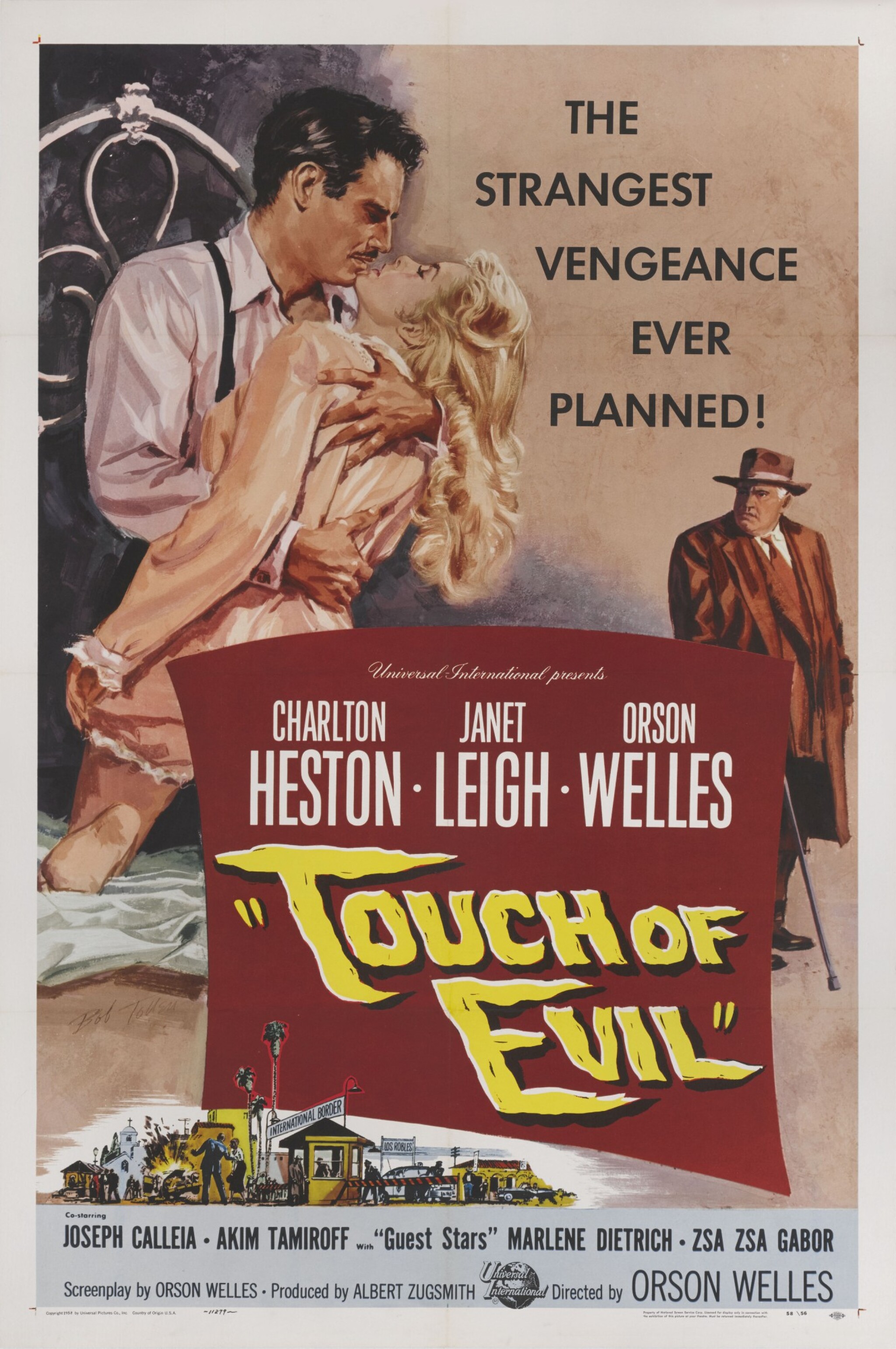Name at least 3 other films identified by critics as Classic German Expressionist films (add illustrations).


The Testament of Dr. Mabuse, 1933

Name at least 3 other films identified by critics as Classic German Expressionist films (add illustrations).



Describe some of the stylistic conventions associated with the Expressionist art movement. Post some additional examples of Expressionist Art.
‘Conventions of the expressionist style include distortion, exaggeration, fantasy, and vivid, jarring, violent, or dynamic application of colour in order to express the artist’s inner feelings or ideas.’ Expressionistic art aimed to express emotional experiences oppose to physical reality.’



Expressionism was an art movement and international tendency at the beginning of the 20th century, which spanned the visual arts, literature, music, theatre and architecture. The aim of Expressionist artists was to express emotional experience, rather than physical reality.



Expressionist art presented the world from a subjective point of view. It distorted the world to create an emotional effect. They usually involve intense and jarring colours, distorted lines and non-naturalistic brushwork.
Examples:
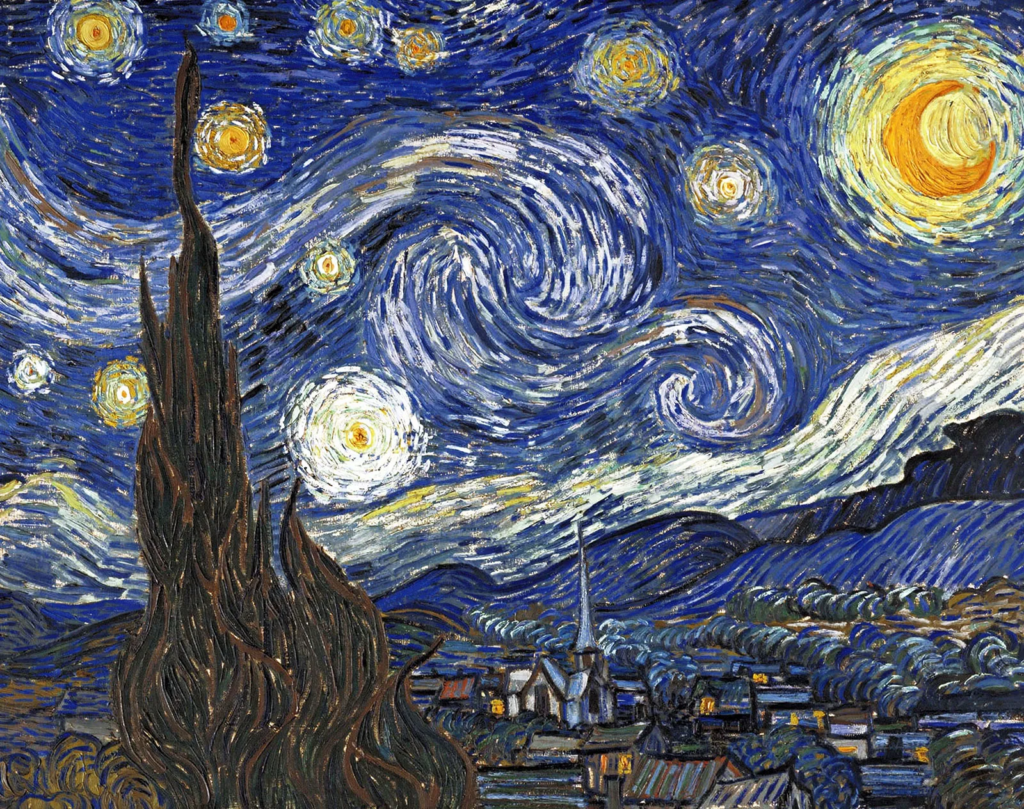


Why has UFA managed to stay in business?
UFA was established in 1917 when the German government consolidated most of the nation’s famous studios. This German motion-picture production company that made artistically outstanding films during the silent era and its purpose was to promote German culture, was located in Berlin with the best equipped and most modern studios in the world. It encouraged and promoted experimentation and imaginative camera work and employed directors such as Ernst Lubitsch, known for directing sophisticated comedies.
The company was purchased in 1927 by the financier Alfred Hugenberg, a future Hitler supporter who mandated that the company devote itself to films that promoted German nationalism. But company was pressured to make National Socialist films almost exclusively when the Nazis came to power in 1933. The resulting films proved popular in Germany, but rising production costs and a shrinking international market resulted to large deficits. The government bought the company in 1937 and after started to control film content. The company ceased to exist after the war’s end in 1945. A new company called UFA was launched in 1956, but it eventually went bankrupt.
Explain how the political, social and economic context of the Weimar Republic affected the production and content of classic German Expressionist Cinema.
Between 1918-1933 Germany were attempting to recover from the impact of WWI, such as having to pay back reparations as agreed by the Treaty of Versailles.
‘The New Objectivity movement started in Germany in the aftermath of World War One. It challenged its predecessor, Expressionism , which was a more idealistic and romantic movement. Artists returned to a more realistic way of painting, reflecting the harsh reality of war, and, Experimentation in German art came to an end when the Nazis came to power in 1933’
The economic disruption of the Weimar period produced an Expressionist style in German film-making, with films often having unrealistic sets and featuring exaggerated acting techniques with the film makers favouring darker storylines and themes, including horror and crime. The shortage of funding, due to the war impact, gave rise to the Kammerspielfilm movement, with atmospheric films made on small sets with low budgets.
Explain how the political, social and economic context of the Weimar Republic affected the production and content of classic German Expressionist Cinema.
As a consequence, German expressionism gave birth to two new cinematic genres: the Gothic horror movie and film noir (crime thrillers which explore the darker aspects of human behaviour).
Probably the best-known German expressionist film, Metropolis is part-science fiction and part-social allegory. It depicts a future society where citizens have been split into two distinct classes: the elite, who enjoy lives of leisure in the sun, and the workers, who toil monotonously beneath the ground.
Metropolis was an incredibly ambitious project for its time. It cost around five million marks, took several months to film and employed up to 300 extras. It proved unpopular with movie-goers but was critically applauded and is considered a forerunner to modern science-fiction movies.
After World War One, the new Weimar Republic of Germany was left with economic and political instability. This was mainly due to the high amount of reparations they had to pay due to the Treaty of Versailles. In turn, this economic instability caused political instability with the extreme right wing parties such as the fascists fighting with the extreme left wing parties (the communists). This led to the dark themes German expressionism explored.
However, German Expressionism was creative and abstract. The Weimar period was full of expressionist art which inspired the mise-en-scene of many German Expressionist films, such as The Cabinet of Dr Caligari. This expressionism is due to more traditionalist art when Kaiser Wilhelm II was the head of Germany, in the Weimar Republic, artists had more freedom.
Identify at least one film which appears to have been influenced by the visual style of classic German Expressionist Cinema:
The Nightmare Before Christmas by Tim Burton
Jack Skellington, a being from Halloween Town, finds Christmas Town and is instantly enchanted. The situation becomes riveting when his obsession with Christmas leads him to abduct Santa Claus.

There were many similarities in set design and costume between “The Cabinet of Dr. Caligari” and “The Nightmare Before Christmas”.
Make-up:

Cesare heavily inspired Jack Skellington’s look. Both have very pale white skin resembling a dead person, they both also have black surrounding their eyes creating an unhuman feel.
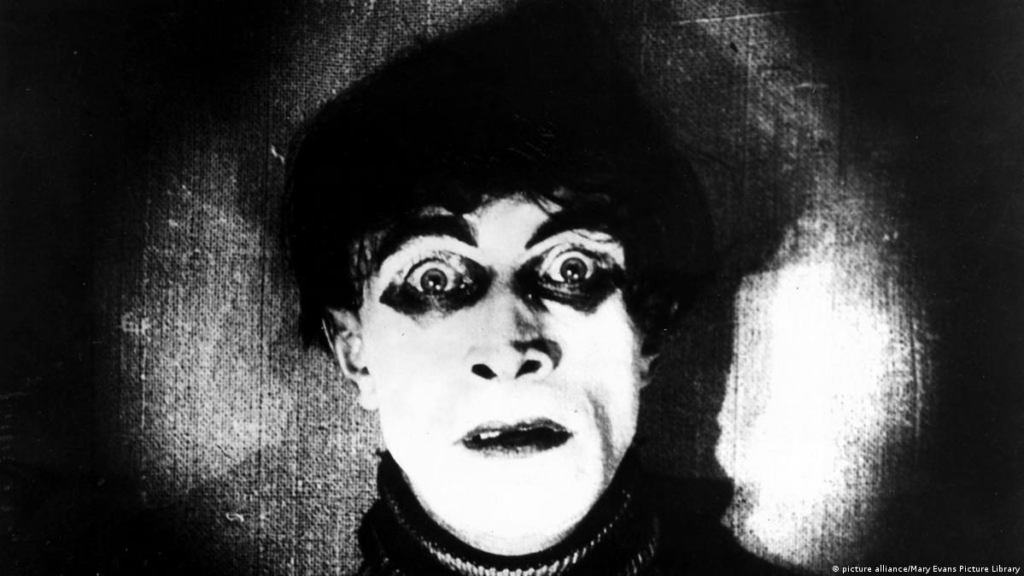
Costume:
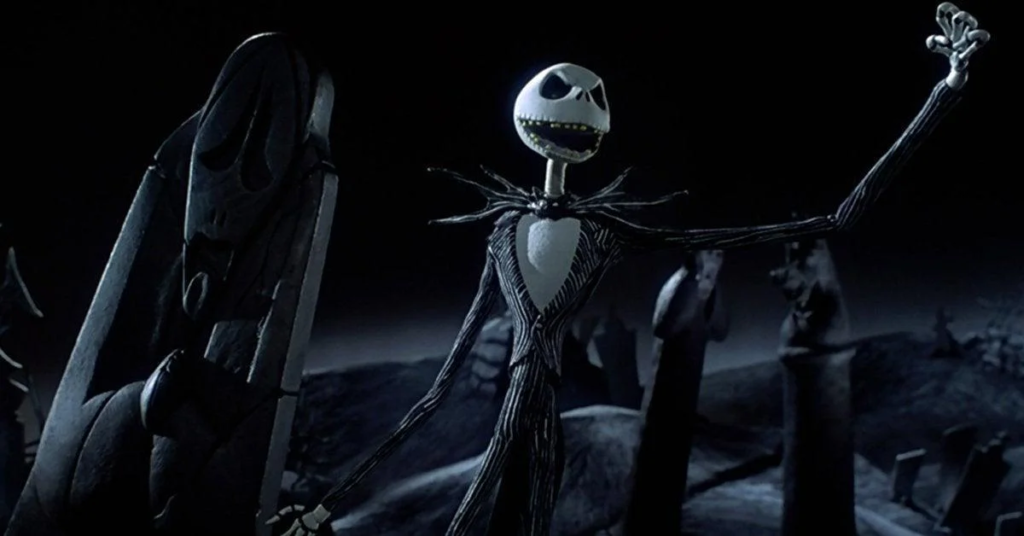
Both Jack and Cesare have very thin legs and a wide ribcage. They are clothed with a full black pantsuit. Covering their arms and legs.

Set:

Both movies include outside eerie sets. In these specific photos they are both in elevated places with the same camera shot and angle the same to show the height of the structures.

Name at least 3 other films from this period which were being directly influenced by classic German Expressionist films:
Vertigo (1958) by Alfred Hitchcock
Detective Scottie who suffers from acrophobia is hired to investigate the strange activities of an old friend’s wife. She commits suicide while Scottie becomes dangerously obsessed with her.
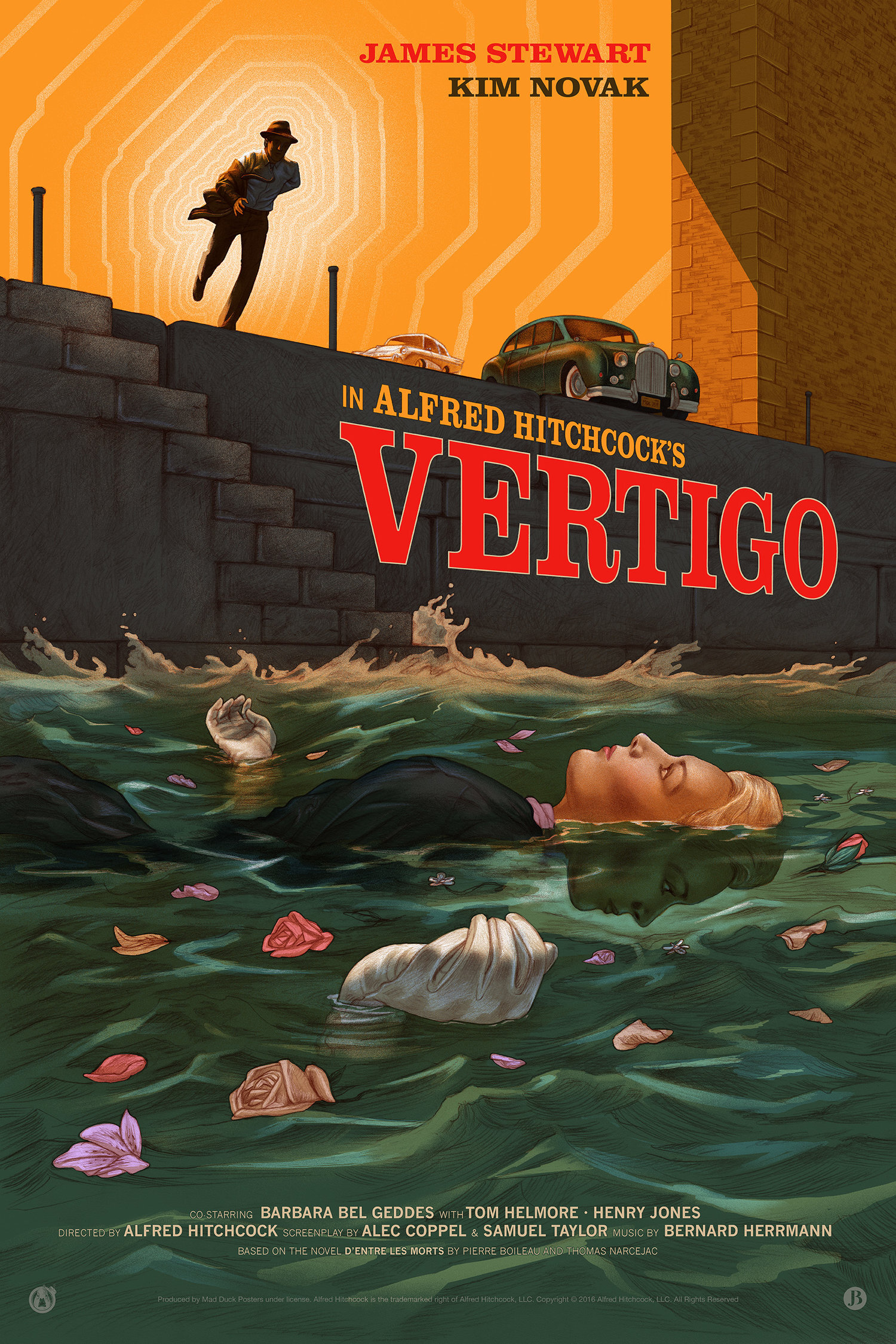
Stranger on the Third Floor by Boris Ingster
Michael Ward, a reporter witnesses a murder at the diner. His influential evidence is enough to prove the accused guilty for the murder. But Ward is clueless about the new secrets yet to be revealed.

Touch of Evil (1958) by Orson Welles
When a car bomb explodes on the American side of the U.S./Mexico border, Mexican drug enforcement agent Miguel Vargas (Charlton Heston) begins his investigation, along with American police captain Hank Quinlan (Orson Welles). When Vargas begins to suspect that Quinlan and his shady partner, Menzies (Joseph Calleia), are planting evidence to frame an innocent man, his investigations into their possible corruption quickly put himself and his new bride, Susie (Janet Leigh), in jeopardy.
